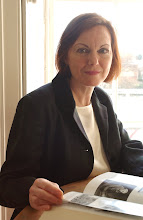


 Dr Nick Cambridge, a retired GP in Croydon, and a research associate here at The Wellcome Trust Centre for the History of Medicine, wrote his MD thesis on Dr Alfred Carpenter (1825-92). In the process he discovered the memorials to this remarkable doctor.
Dr Nick Cambridge, a retired GP in Croydon, and a research associate here at The Wellcome Trust Centre for the History of Medicine, wrote his MD thesis on Dr Alfred Carpenter (1825-92). In the process he discovered the memorials to this remarkable doctor.'Carpenter worked in Croydon, Surrey, for 40 years until his death. He was a general practitioner from 1852-82 and then became a consulting physician in 1882 after passing his MRCP (Membership of the Royal College of Physicians) by examination. He was medical attendant to the cadets of the East India Company military seminary at Addiscombe, Surrey, until its closure in 1861, and medical attendant to four successive Archbishops of Canterbury at Addington Palace, Croydon and "closing the eyes of three".
He sat on the Croydon Local Board of Health and introduced many important reforms. His interests included sewage irrigation, infectious disease and temperance. Carpenter continued to advance his sanitary knowledge and was awarded the Certificate of Sanitary Science from Cambridge University by examination (later called the Diploma in Public Health). He later became lecturer in Public Health at St Thomas’s Hospital, London, and published a book about his lectures. Carpenter was also an examiner in public health for the Universities of London and Cambridge; an examiner for the Society of Apothecaries and sat on a Hospitals’ Commission for smallpox and fever hospitals.
On the national stage he belonged to, and held office with the British Medical Association (Chairman of Council from 1878-81), Society of Arts, National Association for the Promotion of Social Science, the Sanitary Institute of Great Britain and the Medical Society of London. Carpenter regularly corresponded with the British Medical Journal, Lancet, The Times and the local newspapers. Carpenter had a philanthropic nature; he gave ten per cent of his income to the poor and held annual parties for the children from the Ragged School. He also raised Testimonial funds for national and poor figures alike.
However, he was never far from controversy: he was involved in two high profile court cases against him; he was burnt in effigy behind Croydon Town Hall, and in Reigate he was thrown into a pond by the publicans during his abortive parliamentary campaign (as a Justice of the Peace he was particularly hard on those who came before him for drunkeness).
There are a number of memorials to Carpenter at Mayday Hospital, Croydon, including a brass plaque commemorating him as a founder of Croydon General Hospital (1866) and a marble bust executed by E. Roscoe Mullins which is in the post-graduate centre. It was originally unveiled in Croydon Public Halls in 1886 at a Grand conversazione for 700 guests in honour of Carpenter who was President of the Croydon Literary and Scientific Institution and a driving force behind the institution for over 34 years.
Carpenter's name is also carved on the stone memorial dated 1883, which would have been placed inside the Croydon Union (workhouse) infirmary. He is listed among the ex-officio Guardians. The infirmary later became Croydon General Hospital.'





